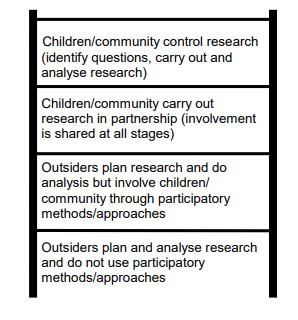The world is concerned about children’s issues and there is an increasing interest and emphasis on the protection of child rights. Although child rights have been an important area where strong policies are made, robust and evidence-based policymaking through research and evaluations started gaining momentum from the 21st century. Evaluations are pivotal in assessing the improvement of indicators of any intervention catering to the needs and rights of children. It is also used to assess the processes, to assess the outcomes, formative assessments and many more of intervention.
Children are often directly part of studies, researches and evaluations as the main respondent. With children as respondents, evaluations are being conducted in various thematic spectrums. Some of the important areas are Early Childhood Education, school education, learning level improvements, child labour, child rights, child safety, etc.[1]
The UN Convention on the Rights of the Child places in law the right of children and young people to have their opinion on matters that affect them taken into account in accordance with their maturity. The parental or societal control over the children allows them to become more vulnerable to exploitation during research and evaluation. Roger Hart, a famous child rights academician formulated the ladder of participation[2] which is an important approach that should be used in evaluations. The ladder focuses more on the degree of control stakeholders have in the process.

Figure 1 Hart’s ladder of participation for children and young
The evaluator should design evaluations and research by ensuring a greater degree of control for the children during the study. Considering the vulnerability of the children in research and evaluation, the evaluator should also follow all the ethical standards and child safeguarding policies should be followed.
Some of the evaluation techniques with children as respondents are:
- Visual techniques with the group of children: Visual techniques are very common in research and evaluations covering children as respondents. It is even more suitable with children having limited formal education. Using this technique children can describe their environment, life situations, aspiration, past incidents, etc. These are then mapped to generate themes and frameworks by the evaluators. A study in Nepal[3] regarding children’s clubs used this method extensively to evaluate the impact of the program. However, visual techniques may be a disadvantage for children with visual impairments or areas where the child is more confident in explaining verbally culturally.
- Role plays, Drama’s and songs, improvised by children: This is a powerful method wherein students can express and communicate their problems, situations, and aspirations. It is also a powerful method to bring changes in society through communication.
- Focus Group Discussion: To overcome the adult-children power relationship, children are invited separately to have a focussed group discussion. Among their peers, children are open and they will express their opinions. This method is widely used in all the research and evaluations as the qualitative component.
- Structured and semi-structured interviews: If conducted efficiently and sensitively, it can elicit a great deal of quantitative and qualitative information. Researchers can interview the children in a neutral environment where the control is not exercised by the adults. This will help children to open up more and can cover life stories, testimonies, experiences, program effectiveness, etc.
All the techniques and ideas provided above are child-centric and evaluators should always keep in mind the fact that research and evaluations among children is a sensitive business. Using these ideas and by strictly following ethical standards and child safeguarding policies, evaluators can bring out a lot of insights and information from children without doing any harm to the children.
[1] Borgers, Natacha & de leeuw, Edith & Hox, Joop. (2000). Children as Respondents in Survey Research: Cognitive Development and Response Quality 1. Bull Methodol Sociol. 66. 10.1177/075910630006600106.
[2] Hart, R. (1997). Children’s Participation. New York: UNICEF.
[3] Rajbhandary, J, Hart, R. and Khatiwada, C., (1999), The Children’s Clubs of Nepal: A democratic Experiment, SC Norway.
